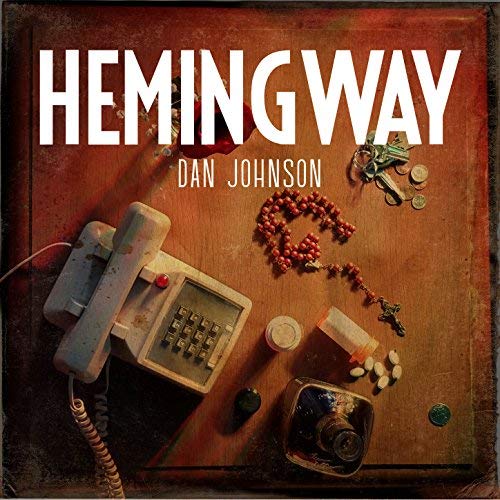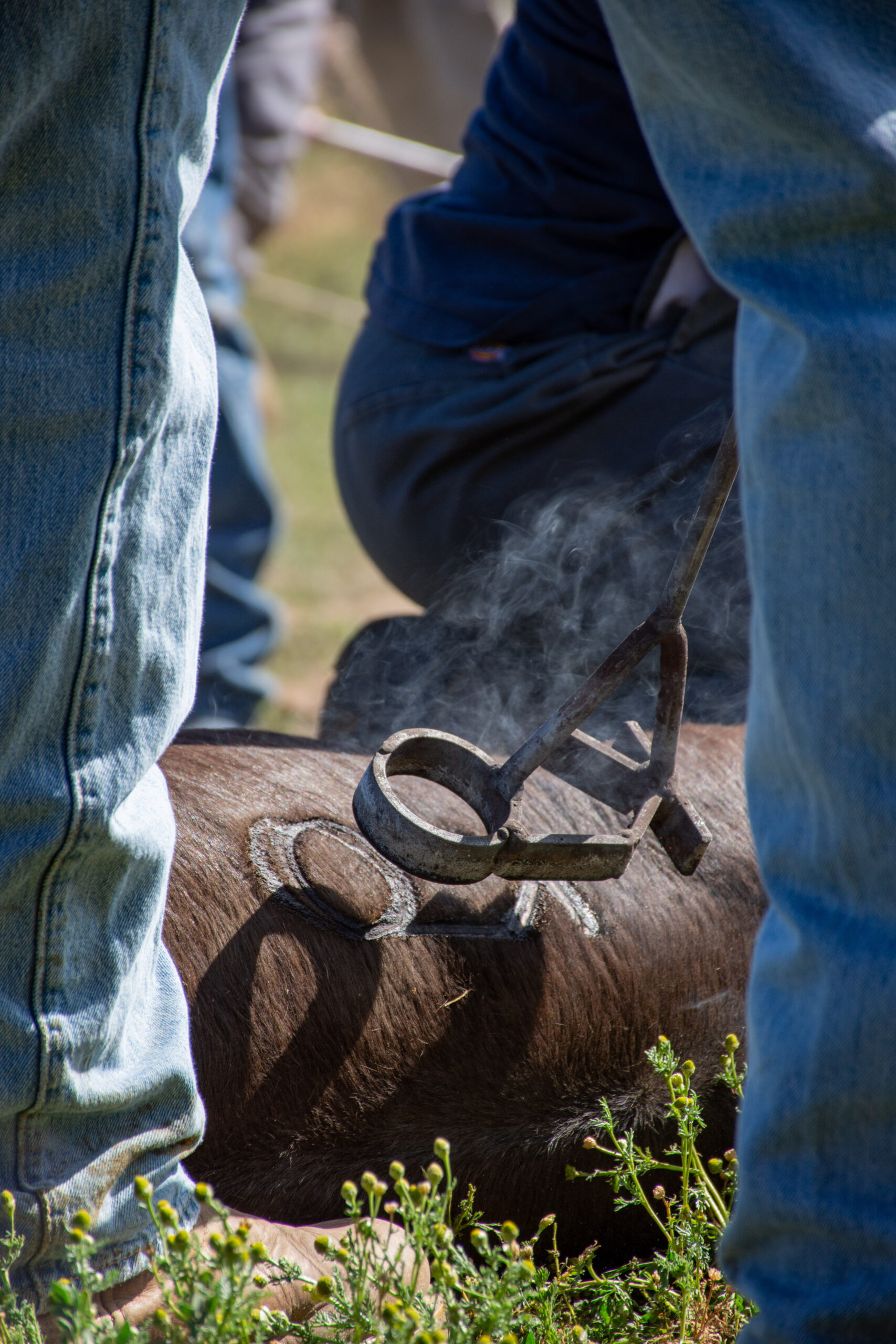Country Lifestyle
The Hemingway Project

By Jan Sikes
Imagine you’re a soldier returning home from Afghanistan or Syria or some other war-torn country. Maybe limbs are missing or your body is scarred in some other way. Or perhaps deep in the recesses of your mind, thoughts and emotions are twisted with guilt.
At what point do you decide you have nothing more to offer, and the world has nothing left to hold you?
It’s a question that smoldered deep inside singer/songwriter Dan Johnson’s mind as he struggled for decades to come to terms with his veteran father’s suicide that occurred the day before he turned eleven. Like thousands of others then and now, Johnson’s father returned home from war confused and in pain.
“My dad desperately needed someone to personally connect with him,” Johnson said.
Through the songs and stories on Hemingway project, Johnson has found an avenue to provide that vital connection. And while it is too late for his father, he is confident it isn’t too late for other veterans.
Johnson spoke candidly about the defining moment when he realized he had to step up and try to do something to help.
“It was a very specific moment for me,” he said. “I was doing a show at Hoot’s in Amarillo, Texas. The manager is a good friend, a Marine who came back with tremendous post-traumatic stress.”
Johnson paused. “I asked him about his new Facebook profile picture, a bloody red number twenty-two. He said he was part of ‘Twenty-Two Kill,’ and explained it is an organization that tries to help reduce veteran suicides through raising awareness. Then he told me there is an average of twenty-two veteran suicides per day. That nailed me to the wall.
“I couldn’t believe it. And while it seems extreme, I did the research and found it was accurate. A few days later, I had a thought. I play around two-hundred shows every year, and I have a microphone. If I ran into this guy in a bar (something tells me there’s somebody in every single bar I’m in) who has either been affected by or is currently struggling with thoughts of suicide.”
Johnson’s story always leads back to his own father.
“I thought about my dad, because as much as the awareness is important, my dad didn’t need public awareness,” Johnson said. “He needed someone to connect on a personal level, someone to tell him that while suicide may end his pain, it will only amplify it for his loved ones for the rest of their lives.”
That pain and long-lasting effects of his father’s suicide gives Johnson first-hand experience when counseling someone who is on the verge of taking his or her own life. He uses those words he wishes someone had said to his father and finds it strikes a chord of truth.
Exactly how was the Hemingway project born?
Johnson has been a huge fan of the writer Ernest Hemingway his entire life, so he visited Hemingway’s home in Key West, Fla. As the tour guide took the group through the house, Johnson lingered behind in Hemingway’s study where so many of the classic stories were written.
“His study is still identical to the way he left it with his typewriter and bourbon bottle. It was literally like he could walk back in at any moment,” Johnson said. “I stood there soaking up all the creativity that flowed through that room. It hit me hard how many people, like Hemingway, reach a point where they feel as if they don’t have enough left to give, and the world doesn’t have enough reasons for them to stay in it. And of course, then I thought of my father and how he took the Hemingway out. So, I wrote a big chunk of the song, ‘Hemingway,’ standing in Ernest Hemingway’s study.”
However, Johnson did nothing except play the song for some friends. While they were blown away by the powerful words, he still didn’t know what to do with it.
“After the night in Amarillo, everything shifted,” Johnson said. “I decided that I wanted to sing the “Hemingway” song in the middle of every show and use it to tell my dad’s story. So, that’s what I started doing.”
The results have been phenomenal.
The rest of the Hemingway project came together at a bar in Ireland where Johnson was doing a show. Following his performance, an American soldier approached and asked to buy him a drink. Then, the soldier, with tears in his eyes, told him that his words that night may have just saved his life. He described the isolation and pain he experienced each time he returned home on leave. Because of that, he was hiding out in Ireland on leave and staying drunk. He admitted to Johnson he’d about reached the end of his will to stay alive. That was until he listened to “Hemingway” and heard Johnson’s story about his dad.
Every song on Hemingway is deep and character-driven. Johnson brings the stories to life in each line, each lyric, each aching note.
The musical journey starts with “The Favor.” Haunting strands from a slide guitar set the mood. It is a dark story about newlyweds accosted in a Louisiana swamp by men intent on inflicting evil and harm. But, as the tables turn, Billy says these words to his new bride, “Babe, when the devil owes you a favor, you damn sure don’t ask why….”
The title song, “Hemingway,” is more than moving. It holds the power of a freight train loaded with TNT. It is everything all rolled up into one, with unforgettable lyrics.
Johnson’s strong baritone voice lends itself to the force of the song and pushes the message across. This story has a tragic, heartbreaking, too-human ending.
“Bloom,” tells of a young woman trying to find her wings. “Tom Waits For No One,” is the sad and lonely tale of a man waiting fruitlessly for his lover to return. Chilling and raw, “The Lone Gunman’s Lament,” is a story all-too-familiar for the many who have been forced to kill.
While there are various organizations who provide help to veterans in need, Johnson is taking the Hemingway project to the streets, to those too broken or ashamed to seek help. He is making those one-on-one connections that are vital in suicide prevention. Hemingway is an education, motivation, and intervention all rolled into one powerful campaign. Johnson dares to expose the naked, raw and sometimes ugly truth through words and music.
When Johnson teamed up with Texas novelist Travis Erwin to create short stories that accompany each song, it took the Hemingway project into a much broader spectrum. With a writing style much like Johnson’s, Erwin weaves stories together in an intricate web of multi-dimensional characters and situations that are masterfully intertwined.
From graphic violence to exquisitely tender moments, Hemingway is a journey that touches everyone in some way. No one is spared.
For more information about the project, the non-profit and Dan Johnson, visit http://www.operationhemingway.org.
Hemingway Lyrics
John was a soldier from deep down in Florida
He turned eighteen on Key West
The Army would get him as soon as they’d let him
He signed on the line to enlist
They all called him Hemingway
Because he spent every day
Cussing and fighting and drunk
And, lord he could tell you a story so well
You’d get wrapped in the yarns that he spun
So, Hemingway, tell us a tale
Of some great adventure
Or champions or fisherman
Or girls that put wind in men’s sails
Take us away
Hey, Hemingway
On the day that he turned nineteen
That cursed IED took off his legs at the thigh
Mangled and burned up
But thankful it turned out
The doctors at least saved one eye
Then they sent him home to his mom on the coast
They said, “Thanks for your service there, son.
This purple heart is a medal to mark
All the good for your country you’ve done.”
Through his personal hell
Not a soul would he tell
Too modest to speak of his pain
While innocent, ignorant well-meaning friends of his
Said it would all be okay
So, he just kept on swinging
As each blow kept stinging
Not sure how much longer he’d fight
And everyone asked him to tell them what happened
The day he almost lost his life
So, Hemingway, tell us a tale
Of some great adventure
The battles, the missions
The glory in how you prevailed
What do you say?
Hey, Hemingway
Last Saturday night as the vacancy sign
Beckoned to him from the road
With a bottle of bourbon
And a month’s worth of Percocet
Tucked in his camouflage coat
He reached for the Bible
And read for a while but nothing much seemed to stand out
So, in that little hotel room
When the Gideons fell through
He took the Hemingway out
Hemingway, tell us a tale
Of the young life they took from you
The darkness you’re going through
How we and the whole world have failed
There as you lay,
Hey, Hemingway
Country Lifestyle
Riding for the Brand

By: Christopher Dysinger
According to the Code of the West a man who has integrity is one who rides for the brand. If you are unfamiliar with cowboy parlance this phrase is used to describe being loyal to the outfit you work for. Cowboys were, “intensely loyal to the outfit they were working for and would fight to the death for it. They would follow their wagon boss through hell and never complain.” -Teddy Blue Abbot. Riding for the brand means being loyal and when I consider what it means to be loyal I am reminded of the words of the Lord Jesus to His disciples in Matthew 16:24, “Then said Jesus unto His disciples, If any man will come after Me, let him deny himself, and take up his cross and follow Me.” To me, to take up the cross and follow the Lord is the epitome of what it means to ride for the brand.
When you place your trust in the Lord Jesus you are signing on to His outfit, to speak the language of the West. When you called upon the name of the Lord Jesus by faith, He saved you and from this point you are riding for His brand. In taking up your cross and following Him you have pledged to be loyal, and this means you face any hardship or trial like a cowboy on the trail moving the herd. Any complaint must be swallowed in the same way you would swallow a cup of coffee. When I hear our faith and loyalty to the Lord Jesus put into these terms it stirs something within me that moves me to keep right on riding for the brand.
Louis L’amour wrote, “Riding for the brand was an expression of loyalty to a man’s employer or the particular outfit he rode for. It was considered a compliment of the highest order in an almost feudal society. If a man didn’t like a ranch or the way they conducted their affairs he was free to quit, and many did; but if he stayed, he gave loyalty and expected it. A man was rarely judged by his past only by his actions. Many a man who came west left things behind him he would rather forget, so it was not the custom to ask questions. Much was forgiven if a man had courage and integrity and if he did his job. If a man gave less than his best, somebody always had to pick up the slack, and he was not admired.” It is the same when a person gives his or her heart to Jesus.
When you come to the Lord Jesus you are not judged by your past. When you come to the Lord Jesus, repenting of sin and seeking forgiveness, everything from your past is left behind. All will be forgiven. 1 John 1:9 reads, “If we confess our sins, He is faithful and just to forgive us our sins, and to cleanse us from all unrighteousness.” When you place your faith in the Lord Jesus you are promising to be loyal and in return you will receive the same. He has promised that He will never leave us or forsake us. When you walk with the Lord Jesus through life you are indeed, “riding for the brand.”
“Riding for the brand” is not just an expression of loyalty nor is it just an expression of pride, it is also an expression of love. When a cowboy claims to be riding for the brand, he is telling any other outfit who may seek his loyalty, that he cannot give it, because he has given his word to another. It is the same when we pledge our faith and loyalty to the Lord Jesus. If any would call us away from Christ we cannot go, because we are riding for the brand.
The End
This article is an excerpt from the book, The Bible and the Code of the West by Dr. Christopher Dysinger.
Country Lifestyle
Farm Dogs & Table Scraps

What’s Safe and What’s Not?
Growing up on a farm, our dogs were tough. They roamed the pastures, slept under the barn, and ate just about anything they could get their paws on—whether we meant for them to or not. I’ll admit, I never thought twice when one of our old cow dogs snatched a biscuit off the table or licked up a spill from the barn floor. I’ve even seen a dog steal a whole rib bone off a plate and trot off like he’d won the lottery. And somehow, they always seemed fine.
But here’s the thing—just because they survived doesn’t mean it was safe. For every farm dog that lucked out, there’s another that wasn’t so fortunate. Some human foods can be downright toxic to dogs, and a little bit of bad luck (or a smaller, more sensitive dog) can turn a harmless snack into an emergency.
Common toxic foods lying around the farmhouse
If you’ve got a farm dog—or any dog, really—you need to be aware of the dangers lurking in everyday foods. Some of the biggest culprits include:
Chocolate – The darker it is, the worse it is. Even a little can cause vomiting, seizures, or worse.
Grapes & Raisins – No one’s exactly sure why, but they can cause kidney failure fast.
Onions & Garlic – In large enough amounts, these can destroy red blood cells, leading to anemia.
Xylitol (Found in Sugar-Free Gum & Candy) – This artificial sweetener can send a dog’s blood sugar crashing and cause liver failure.
Alcohol – Even small amounts can be deadly to dogs, affecting their nervous system much more than it does ours.
Bones from Cooked Meat – While not necessarily toxic, they can splinter and cause serious internal injuries.
Macadamia Nuts – These can lead to weakness, vomiting, and even paralysis in dogs.
What to do if your dog eats something toxic
First, don’t panic—but don’t ignore it either. If you know your dog ate something dangerous, call your vet immediately. They can tell you whether to induce vomiting or if it’s something that requires urgent care. If it’s after hours, contact the ASPCA Animal Poison Control Center (888-426-4435) or the Pet Poison Helpline (855-764-7661).
Prevention is always the best medicine, so keep toxic foods out of reach. That might mean keeping the trash can secured, making sure kids don’t slip the dog a treat under the table, or just being more mindful of what’s left on the counter.
Our farm dogs might have been lucky, but luck isn’t a great strategy when it comes to their health. A little awareness goes a long way in making sure they stay happy, healthy, and ready for the next day’s work.
For more information
ASPCA Animal Poison Control: www.aspca.org/pet-care/animal-poison-control
Pet Poison Helpline: www.petpoisonhelpline.com
Visit www.akc.org/expert-advice/nutrition/foods-your-dog-should-never-eat
Country Lifestyle
Summer Squash and Corn Chowder

By Lacey Vilhauer
Total time: 40 minutes
Servings: 6-7
Ingredients
- 6 slices bacon, cooked and crumbled and 1 1/2 Tbsp rendered bacon fat reserved
- 1 1/2 lbs yellow squash, chopped (about 3 medium)
- 2/3 cup thinly sliced celery
- 1 cup diced onion
- 1 Tbsp flour
- 2 cloves garlic, minced
- 2 3/4 cup milk (I used 1%)
- 5 cups canned or fresh cut corn (from about 6 ears corn), divided
- 1/2 cup heavy cream
- 1 1/2 tsp chopped fresh thyme (or 1/2 tsp dried)
- 3/4 tsp salt, then more to taste
- 1/4 tsp freshly ground black pepper, then more to taste if desired
- 3/4 cup shredded cheddar cheese, for serving
- Chopped green onion for garnish (optional)
Instructions
Heat 4 tsp reserved bacon fat in a large pot over medium-high heat. Add celery and onion and sauté 2 minutes then add the squash.
Saute until tender, about 6 minutes, adding in garlic and flour during last 2 minutes of sauteing. Reduce heat slightly.
Add 1 1/2 cups milk, 2 cups of the corn, thyme, salt and pepper to the sauteed veggies.
To a blender add remaining 3 cups of corn, remaining 1 1/4 cups milk and the cream. Process in blender until nearly smooth (about 30 seconds).
Add pureed mixture to pot and stir to blend. Cook until mixture reaches a light boil.
Serve warm with shredded cheese, crumbled bacon and sliced green onions if desired.
-

 Attractions8 years ago
Attractions8 years ago48 Hours in Atoka Remembered
-

 Country Lifestyle9 months ago
Country Lifestyle9 months agoJuly 2017 Profile: J.W. Hart
-

 Country Lifestyle9 years ago
Country Lifestyle9 years agoThe House a Treasure Built
-

 Country Lifestyle4 years ago
Country Lifestyle4 years agoThe Two Sides of Colten Jesse
-

 Outdoors7 years ago
Outdoors7 years agoGrazing Oklahoma: Honey Locust
-

 Equine8 years ago
Equine8 years agoUmbilical Hernia
-

 Outdoors5 years ago
Outdoors5 years agoPecan Production Information: Online Resources for Growers
-

 Farm & Ranch7 years ago
Farm & Ranch7 years agoHackberry (Celtis spp.)





